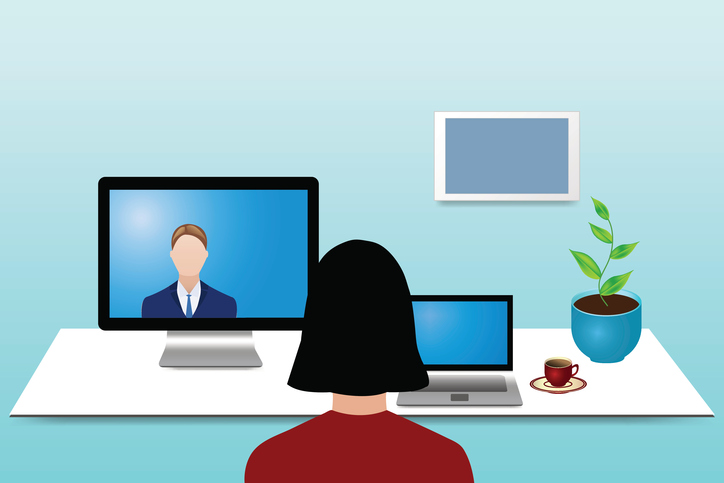Co-Written by Abass Rather & Aqib Yousuf

Government’s announcement to switch over from physical class room to virtual class room during the Covid 19 Pandemic lockdown period seems to be a digital revolutionary step. It seems that govt is in no mood of compromise on the issue of education. Students should not suffer due to the outbreak of covid 19 pandemic and subsequent lockdown. Digital classes takes the place of physical classes. This very idea of digital classes and then the online examination is itself a questionable tactics as the prerequisite for the digital classes and online examinations is to have robust technological infrastructure in place. Both teachers and students needs the gadgets and easy and affordable accessibility of internet speed. Apart from having all the required facilities, it is imperative to have such an ambience where teacher-student relations are not hampered.
The progress and human emancipation of any nation or society requires the correct and unbiased level of understanding of common issues. Imparting quality education to all the citizens of the country is a fundamental right under Article 21A of the constitution of India. Before implementation of any method for teaching standard norms and monitoring mechanism needs to be regulated by the govt. India is a country of approximately 1.35 billion people having varied socio-economic statues. Majority of the population lives in the rural areas and any important decision by the govt like using digital mode of classes the majority of people must be taken care of. However, the decision of online classes and examination ignores the vast majority who does not have neither access nor the resources to avail the gadgets required for it. The National Statistical Organisation (NSO) 75th Round survey on ‘Social Consumption of Education in 2017-18’ had probed households’ ownership of computers and access to the internet. The analysis only includes households which had students aged between 5-29 years and were currently enrolled and attending school. The survey showed that 8.3 per cent of households had computers and 21.6 per cent had internet facility. So holding online classes and exams is discriminatory and violates Article 14 of Indian constitution which guarantees equality before law and denies any discrimination or favouritism.
Javid Ahmad Dar, Professor of Political Science, Kashmir University writes in an article titled E-Classes: The other and ‘Otherization’ ,” this very popular initiative of e-class aims at ‘universalization’ of not-education, but Internet and the gadgets. It implies that the ‘poor’ who are likely to face the most of the economic brunt of this global pandemic would be required, if they dream of education at all, to pool their assets for education of their children, and forget about livelihood.”
The incorporation of Article 21A in the Indian constitution as a fundamental right which provides free and compulsory education to all its citizens from the age group of six to fourteen years gives ample opportunity to the marginalised section of the society. Centrally sponsored schemes like Mid Day Meals encouraged the poorest section of the society to admit their children in the schools. This serves two purpose. Firstly they get enough food for their stomach and secondly they get the education for their future development. But the outbreak of covid 19 Pandemic and the lockdown hit them hard. Due to the closure of the schools they become the worst sufferers. They lost the food as well as the opportunity to fulfil their dreams of better life. Does it sound logical and feasible for the downtrodden section of society whose primary concern now is to have food for the stomach, to have access to the elite class equipments for their children to remain in competition of receiving quality education? The digital divide is quite obvious and clear.
This policy of govt to have digital classes and online examinations without proper technological infrastructure is exclusively for the elite class and the socio-economically marginalised class is getting trampled by this digitally decorated idea. The gap, which needs to be lessened, between haves and have nots is disproportionately widening. Education is the proper tool to lessen the gap but unfortunately the callous and the corporate mindset of the govt is furthering the gap.
Gaurav Sikka, Assistant Professor of Geography at Lalit Narayan Mithila University in Darbhanga, Bihar, claimed that the online mode of teaching is widening the social and gender divide. Talking to NewsClick, he said, “I teach a majority of students who hail from conservative families where the parents have no idea that the students can take classes online. Thus, they are denying the girl students access to mobile phones. Similarly, another student told me that he could not take classes because he was busy with his family in harvesting the crop. Now, even if I wish to assist this boy, I cannot because there is hardly any internet connectivity and half of the data vanishes in just one class.”
The situation in Jammu and Kashmir is not much different from the rest of the India. But discriminatory attitude of the govt against the Jammu and Kashmir students in particular and to the public in general has gone to the highest level. The internet speed from 2G to 4G has not risen almost from the last one year. It is pertinent to mention here that the Internet and the voice calling was snapped after the abrogation of Article 370 on 5th August, 2019 in Jammu and Kashmir and are yet to be fully restored. No stone was left unturned for the restoration of the 4G Internet speed in Jammu and Kashmir from the lower administration to the Supreme Court of India but all in vain. The situation in Jammu and Kashmir is deplorable and pathetic particularly for the students. They have been suffering from the last 30years from the one way or the other. And now the adamant attitude of the administration in continually following the undemocratic dictations adds more sufferings to the students. The abrupt and frequent snapping of 2G Internet speed (which is not enough to run the video lecture smoothly) in the midst of the lecture creates bizarre situation for the students as well the teachers.
The online campaign against the digital learning and online examinations started by various student organisations like Students Federation of India (SFI), All India students Association (AISA), National Students union of India (NSUI) etc gained much momentum and support across the country. These organisations and unions declared May 20 as ‘National protest day’ to seek attention towards student sufferings.
It is not only connectivity and non availability of gadgets that is an issue but many teachers need assistance and are not able to use technology at their own. Teachers particularly in rural areas are facing problems in handling the tools. They even do not feel at ease in delivering online classes. The ease of physical class room can not be taken over by the virtual class rooms. More than anything else the ambience for the healthy teacher-student interaction is crucial which does not find the space in the digital mode. Jitendra Meena teaches history at Shyam Lal College, University of Delhi said, while talking to the Newsclick over the phone, “for the first ten minutes, you can check if everyone has joined and whether all can hear your voice etc. I teach a class of almost hundred students but on your personal computer, you only see a few faces. Now, you really do not know if everyone is understanding the topic or not. At the end of the class, it feels like you have only given information… Some complain about connectivity, some do not have smart phones. Even if they have both, then you need a space where you can attend the class with concentration.”
There is a fundamental contradiction between physical class room and the virtual class room. Critical and analytical discussions in physical class room develops spontaneously and becomes a two way process but in virtual class room, the process remains almost one way. The digital process of learning is not guided by any standard norms or regulations by the authority. There is no monitoring mechanism and any kind of assessments. Teachers are sharing their lessons and study material on Whatsapp or some other applications. The process of two-way interaction and consequent development of discussion takes the back step. The main drawback of digital classes under current circumstances when state lacks technological infrastructure as well as economic stability is that it ignores majority and benefits a few. There is a cry from the downtrodden when will the govt take decisions keeping them in considerations. Shall that ever happen?
Abass Rather is a socio-political activist and Aqib Yousuf is a student of Law at Kashmir university. Both resides in South Kashmirs Kulgam district.
SIGN UP FOR COUNTERCURRENTS DAILY NEWS LETTER














































